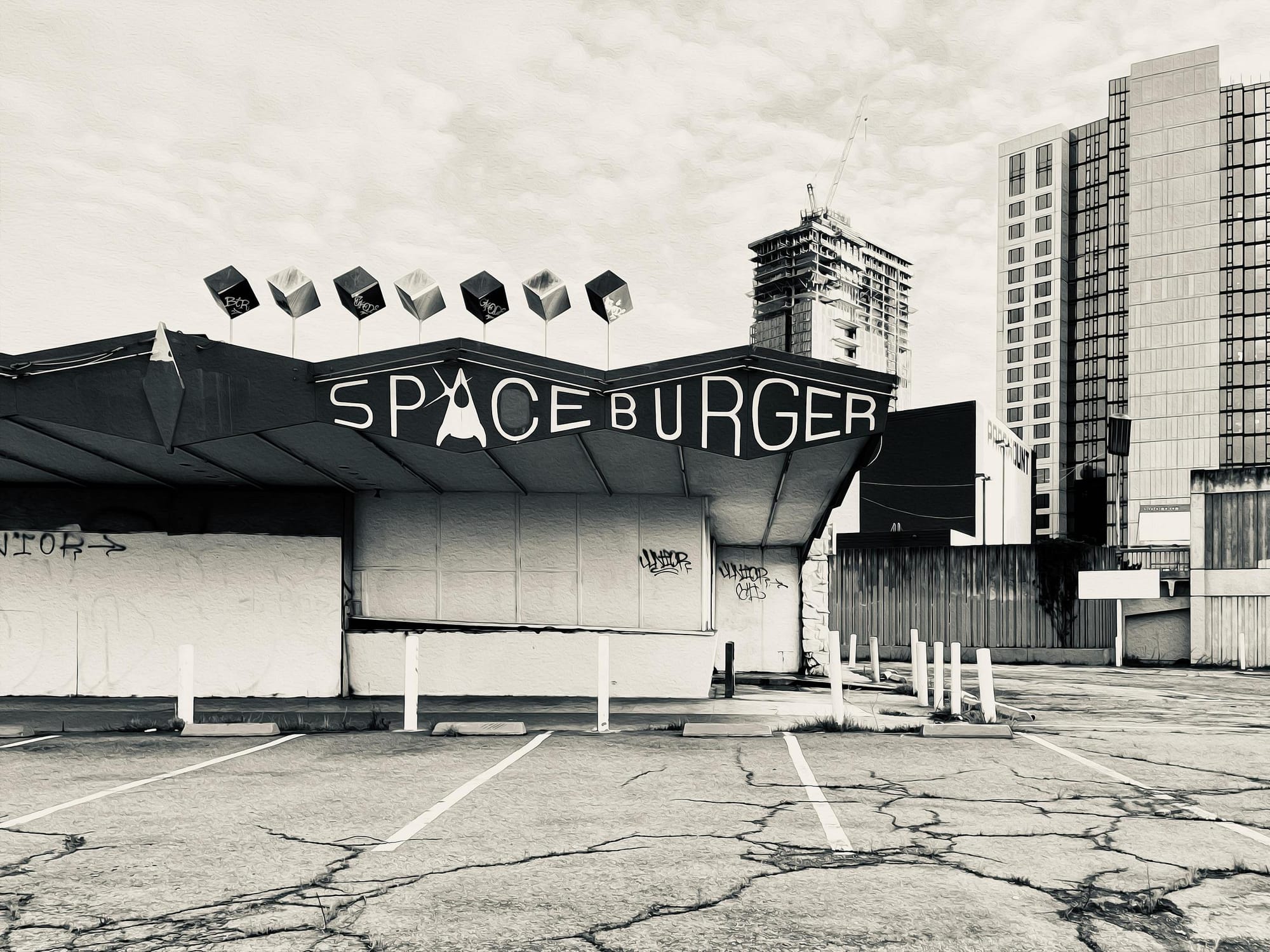“Revisiting Oakland: A Post-Pandemic Photographic Survey of Urban Landscapes“
Works by Gina Gaiser
Manna Gallery
473 25th Street, Oakland
Through June 1
Only four years ago we were washing our hands often, trying not to touch our faces, and staying six feet away from one another. Even when we went for walks to get out into the fresh air, the sequestered existence we led meant crossing the street when another person approached on the sidewalk. We were masked and leery, unsure of the potentially deadly airborne virus around us; a new reality. We’re still learning to cope with that reality, and its scars.
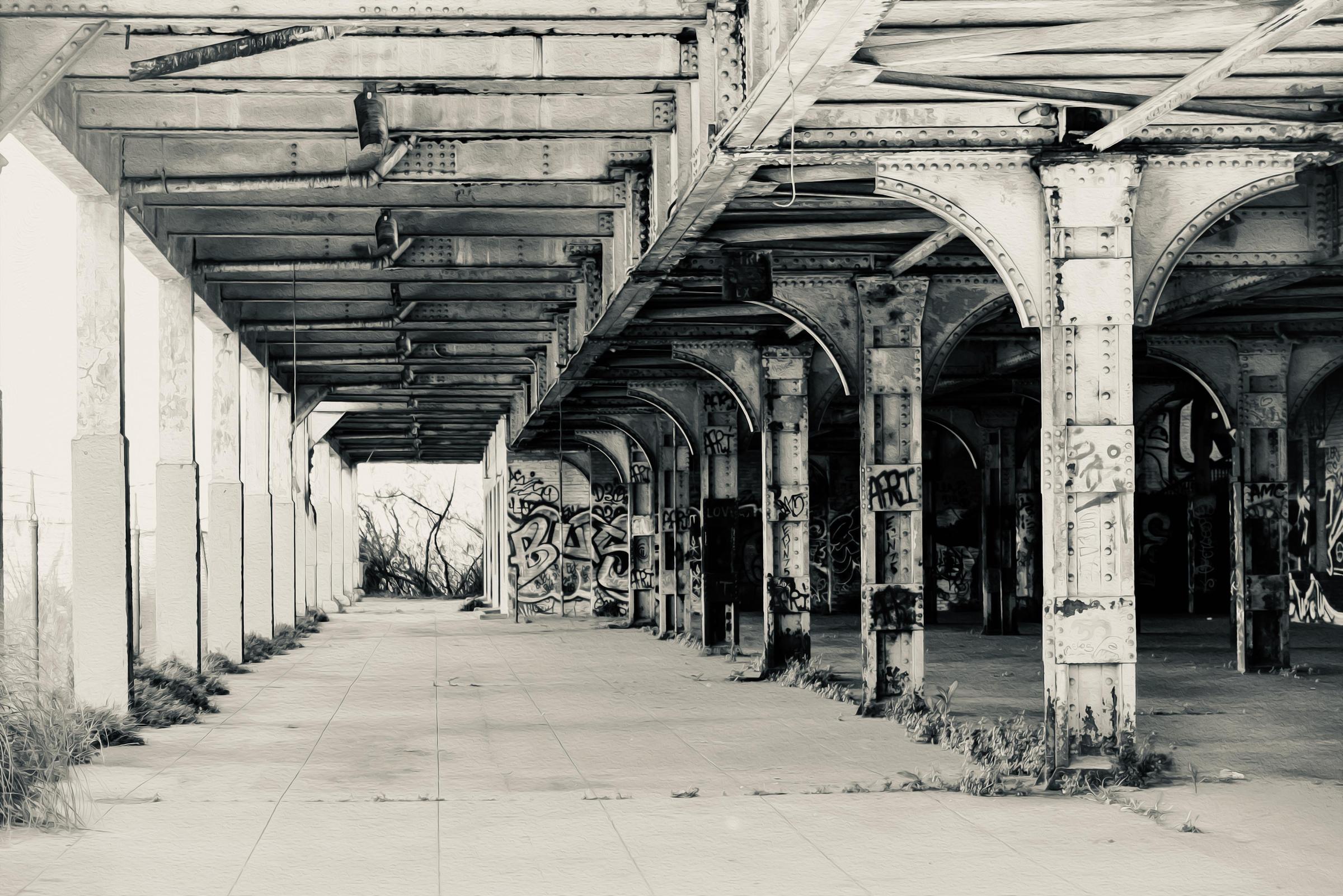
Despite Oakland’s rich and dynamic arts culture, “The Town” has felt the wounds of the pandemic perhaps more acutely than some other American metropolises. To put it not-so-politely: shit’s pretty ragged around these parts these days. Storefronts across the city in nearly every neighborhood are vacant, boarded up, or abandoned. Gina Gaiser’s perception of these lingering bruises, rendered through black-and-white photographic still lifes of a wounded city, don’t look away.
“What is significant or recognized?” she asks in her artist statement. “What is ignored or forgotten?”
Revisiting Oakland: A Post-Pandemic Photographic Survey of Urban Landscapes at Manna Gallery consists of 40 photographs. Excellent pieces like “Space Burger” depict the iconic — and now permanently closed — fast food joint at Telegraph Avenue and 22nd Street in all its sorrowful loveliness. One can imagine the sounds, smells, and bustling activity it was once the locus of.
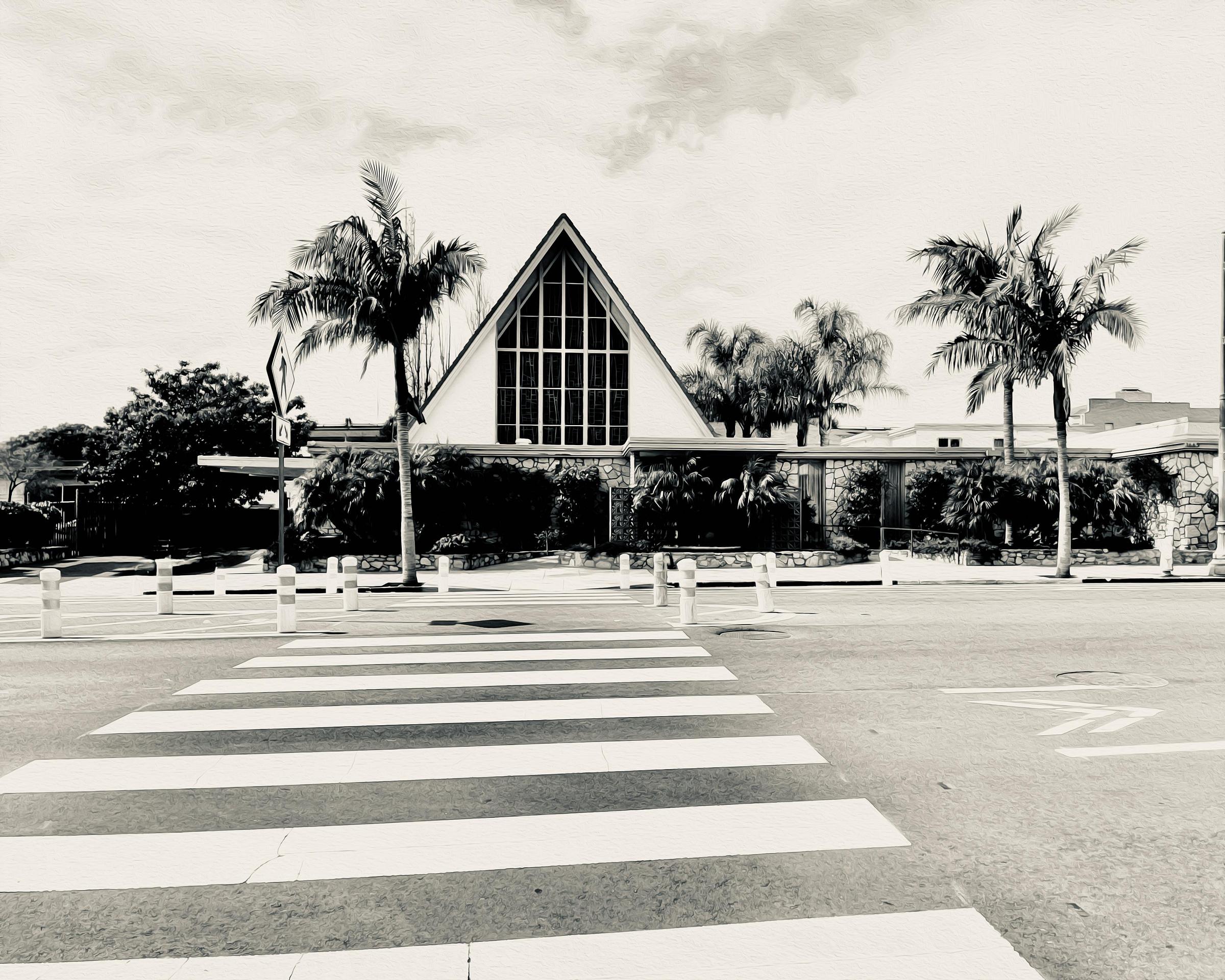
The long-defunct Southern Pacific train station in West Oakland, “16th Street Train Station,” although not a casualty of the pandemic (it’s been vacant since 1994), also possesses Gaiser’s eye for beautiful decrepitude. So too do works like “5th Street House” which portrays a boarded-up and burnt-out residence, its plywood coverings written over in graffiti tags. And photos of buildings that are still operational, like “Hell’s Angels Oakland Motorcycle Club” and “Fouche’s Hudson Funeral Home,” capture their locales’ uniquely gritty Oakland vibe.
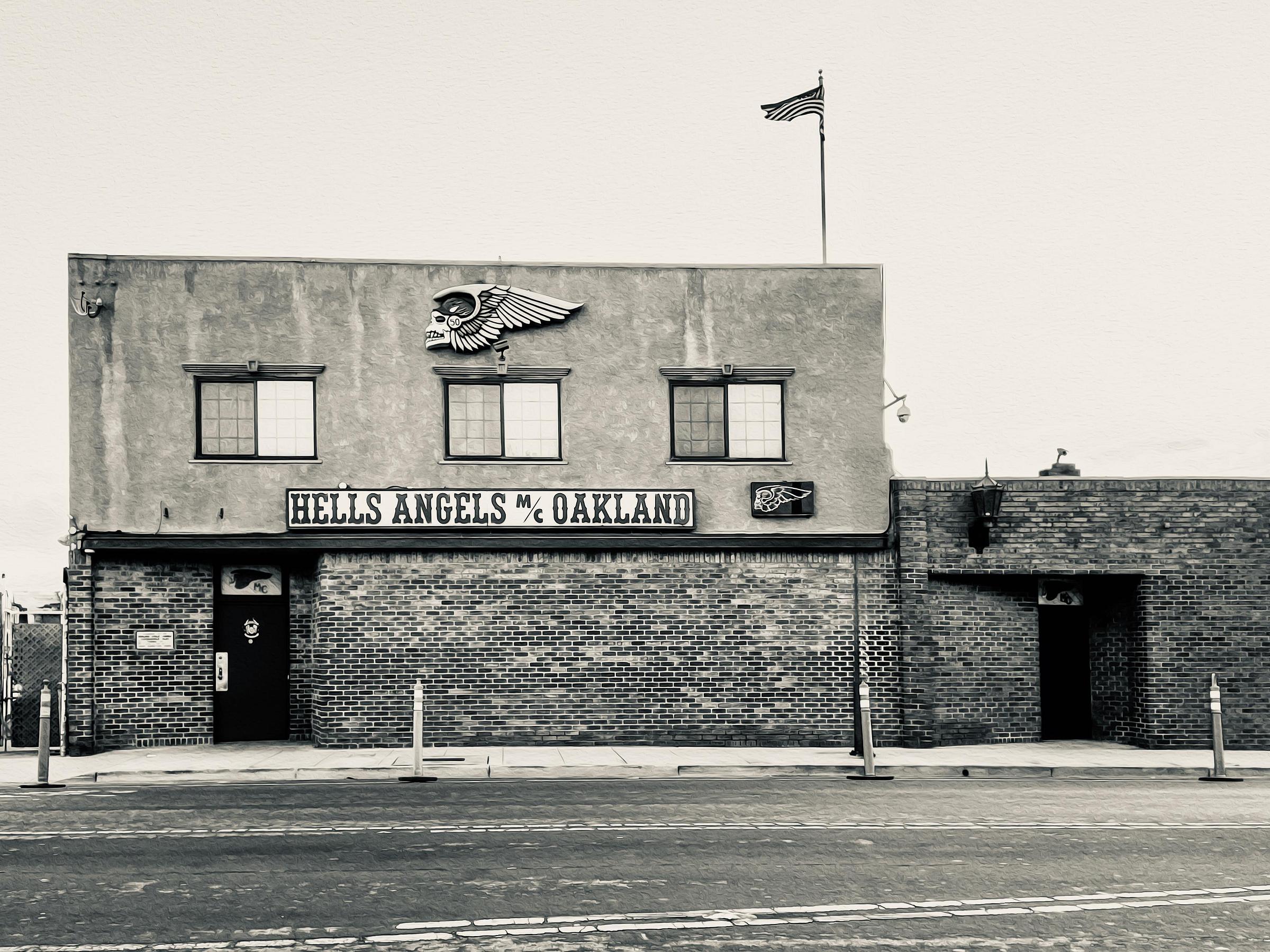
Gaiser’s strong compositions are occasionally weakened by augmentations that seem unnecessary. Although she states that her work uses “…digital techniques reminiscent of comic strips or film frames,” I found myself wishing she’d focused more on the photographs’ black and white contrasts than on running them through a digital filter where certain features look almost drawn. Photographic filters can be valuable tools. But in this collection the shots need no additional flourishes, which detract from Gaiser’s keen eye for static beauty and the light and shadow she makes new.
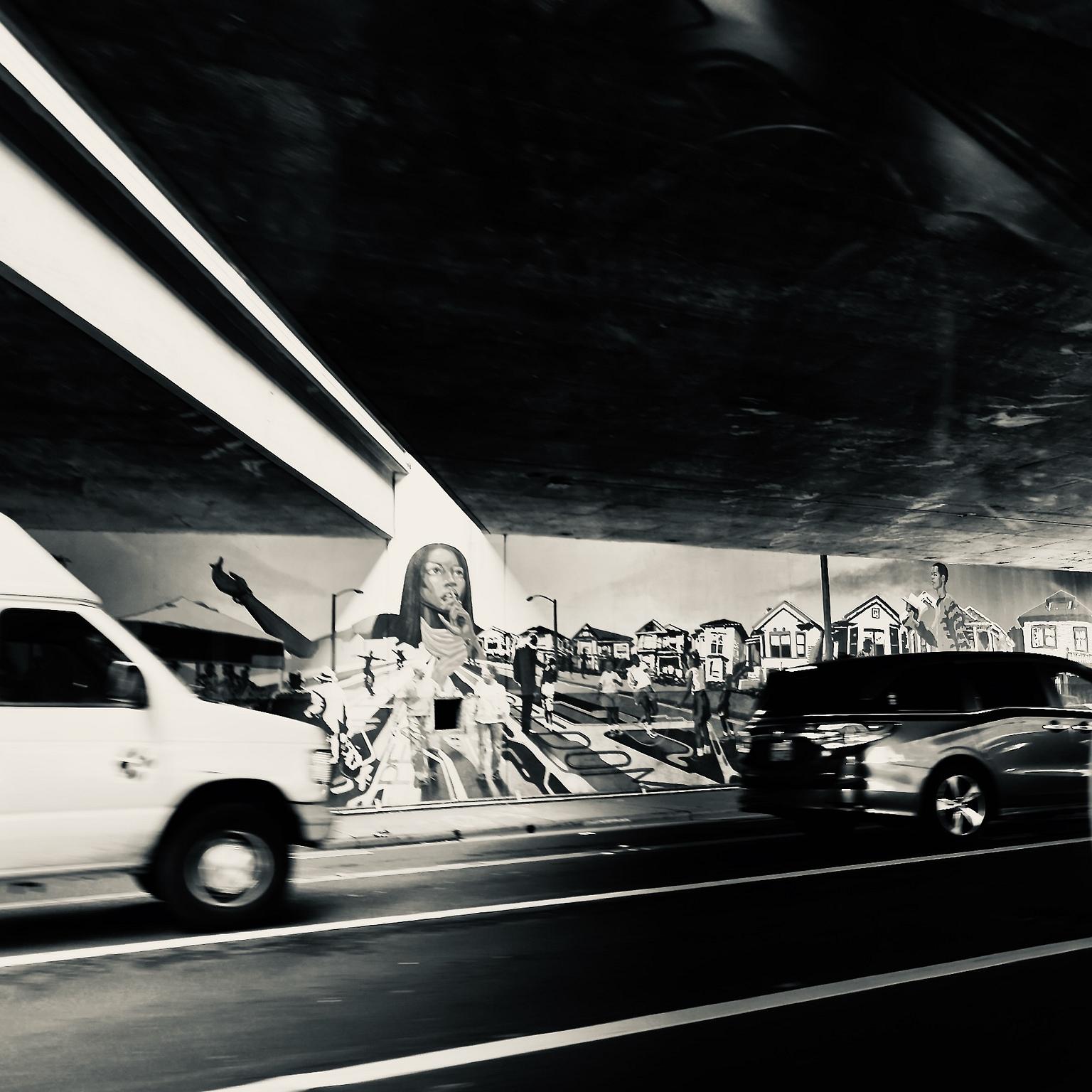
Yet the works overall are engaging in their sweeping and melancholy record of what Oakland has endured, and its tenaciousness. Gaiser’s survey of a vibrant city reflects her local Bay Area roots. The Oakland of our age is undeniably present in her collection. And there’s no insignificant degree of hope in her portrayals of its plight. Gaiser gives significance to what she shows us: we’re made to pause and look at what we might pass by unawares. Revisiting Oakland imparts memory to the forgotten, inviting us to question what’s generally ignored.
